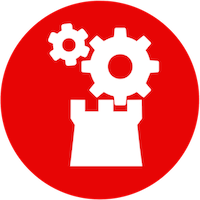01 Mar 2016
Earlier in the year we hosted a webinar where we talked about the basics of LDC Via: how to migrate data and use our templates. You can watch that video here. But now it’s on to the next topic, and that is going to be developing applications using LDC Via as a back end.
We’re going to talk about modern web application development using REST services. So, we’ll show you demos of developing an application that works with LDC Via data using React, but then we’ll show you how to do exactly the same thing using node.js, and then the same again with Vaadin. We’re going to be talking fast, but hopefully you’re going to learn a lot.
So set the date in your diary: Wednesday April 6th at 4pm UK time. You can sign up here.
24 Feb 2016
We’ve always been keen to make it as easy as possible for you, as a developer, to get authenticated against our API. This is why we used a simple API Key model. We had feedback from some developers that they would prefer us to allow a more traditional session cookie approach to authentication.
In our most recent version of LDC Via, we’ve enabled just that. There are now two different ways that you can authenticate your users against our services. You can continue to use the API Key if that suits your need. But you can also now use a session cookie.
You get allocated the cookie quite simply. You just post the username and password of the user to our service and we return a session cookie if it is valid. Then, whenever you make another request against our services you have to pass the session cookie back to our servers. If the cookie is still valid then we will perform the operation. It’s all documented in our API page.
The use-case for this is most likely to be client-side JavaScript applications using, for example, jQuery or AngularJS. You may be aware that Ajax is not designed to pass cookies to remote servers. So we had to make some changes to our servers (that’s all done, don’t worry), but you’ll also need to make some changes in your code. In jQuery you’ll want to use the “xhrFields -> withCredentials” setting. And in AngularJS you would, similarly, set the withCredentials property to true on your $.ajax requests.
This is just one example of adding features to LDC Via because you, our users, want them. If you have ideas for improving LDC Via, please do contact us.
26 Jan 2016

The LDC Via team will be out in force at this year’s IBM Connect event and, as in previous years, a couple of us are presenting.
Mark Myers is presenting a session with Gabriella Davis about SSL and SHA2 Certificates:
The SSL Problem and How to Deploy SHA2 Certificates
Monday 11:30-12:30 | Lake Eola A
Two years ago enabling your site with SSL was a simple affair, buy a certificate or create your own, install it, then just remember to renew it every couple of years. Then, suddenly security holes are being found in SSL virtually every month , popular browsers stop connecting to your site to protect themselves, and you’re continually being told your users data is at risk. In this session we will discuss how it all went wrong and can go wrong again, then go through each step of requesting, generating and deploying a 4096 SHA-2 certificate to use in a keyfile by Domino, IBM Connections, IBM Sametime and other WebSphere products. If you work with these IBM products and need to secure them with confidence this session will show you how!
Matt White will be presenting a quickfire session about node.js:
node.js for Domino Developers
Tuesday 10:30-11:00 | Solution EXPO Theater
The world of web application development is big, really big. One of the most popular platforms is node.js. XPages developers already have a leg up in understanding node.js and in this session you’ll find out the basics: how to create a basic web application. But then we’ll push it a little bit further; how to integrate an application with your Domino data. We’ll cover the best development tools and some useful tips and tricks to help on your journey to become a node.js developer.
And of course we’re keen to talk to people about LDC Via , so if you’d like to arrange a meeting you can do that here.
22 Jan 2016

A week today people from all over the world will be beginning the annual trek to Florida. A new venue, but the same community and great content in sessions.
As always, the LDC Via team will be attending IBM Connect. Matt, Mark, Ben and Julian will all be there.
To make it easier to get hold of us, we’ve decided to put ourselves at your mercy and open up our diaries.
If you would like to talk about LDC Via, see it in action or discuss the technology, simply book a meeting with us using this natty site
29 Dec 2015

We busy folks at LDC Via are hosting a webinar on January 12th which will introduce you to the LDC Via tool and platform. If you want to know what this stuff is all about, and see it in action, you should sign up right away.
Julian and Matt will be presenting the webinar itself, and Ben will be “back-room boy”, responding to any questions on-line and in the webinar chat.
We hope you can join us: we have had a fair bit of interest in LDC Via over the past few months, but equally a lot of people still ask us what it is all about. This session will answer those questions, and more!


